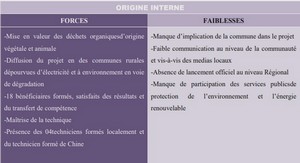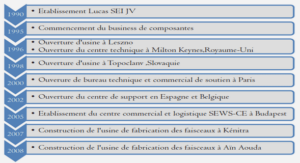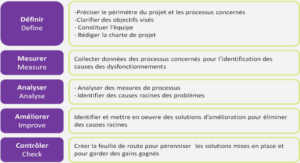Lipogenesis in an adult parasitic wasp
The nature of nutritional resources and the pattern of acquisition and allocation of incoming resources and stored reserves to reproduction and survival has critical consequences for the fitness of organisms and is fundamental to numerous fields of research in behavioural, evolutionary and population ecology (Roff 1992; Godfray 1994; Quicke 1997; Rivero & Casas 1999a; O’Brien et al. 2000; Jervis et al. 2001; Messina & Fox 2001; Rivero et al. 2001; Schliekelman & Ellner 2001). Considerable amounts of carbohydrate, protein and lipid are needed by most adult insects for survival and reproduction (House 1974; Chapman 1998; Rivero & Casas 1999a). Their nutritional behaviour often reflects their physiological needs but metabolic capabilities – storage or neosynthesis- may frequently compensate for lack of adequate resources in the environment (Simpson & Raubenheimer 1995; Warburg & Yuval 1996). Insects can store large amounts of reserves in their fat body, which is their major energy storage site (Chapman 1998; Canavoso et al. 2001). For adults, these reserves are either carried over from the larvae or they are formed from food ingested by adults. Nutrients may also be synthesized de novo by the adults following ingestion of the relevant precursors (reviews by Downer & Matthews 1976; McFarlane 1985; Friedman 1985; Waldbauer & Friedman 1991). Sugars are required by many insect species either to sustain metabolic needs or to serve as precursors. Parasitoid wasps are especially sensitive to sugar deprivation as adults (Hagen 1986; Van Lenteren et al. 1987; Heimpel et al. 1997; Quicke 1997; Olson & Andow 1998) and several species forage actively for sugar sources in the field such as nectar, pollen, honeydew or plant exudates (Rogers 1985; Hagen 1986; Jervis & Kidd 1986; May 1992; Evans 1993; Jervis et al. 1992, 1993; Jervis & Kidd 1996; Sisterson & Averill 2002). These sugar meals supplement carbohydrate resources gained during larval development and can be used immediately to generate energy metabolic purposes or stored for later use by conversion to glycogen (Frideman 1985; Rivero & Casas 1999a). Lipids appear also to be determinant in the biology of most parasitoids and insects, as they are used in egg provisioning. Indeed, yolk rich eggs contain, in addition to proteins, large amounts of lipids (Troy et al. 1975; Kawooya & Law 1988; Giron & Casas in press; Canavoso et al. 2001). An important role of the lipids contained in eggs is to supply energy requirements of the developing embryo (Van Handel 1993). In parallel, lipids are generally used to fulfil the various energetic requirements of the insect body as they can be stored anhydrously, have low space requirements and release a lot of energy when burned (Clements Lipogenesis in parasitic wasps 50 1992; Ellers 1996; Ellers et al. 1998; Rivero & Casas 1999a). Lipids used during the adult stage can therefore be available as lipids stored during the larval development, from lipids ingested with food or from lipids synthesized de novo by lipogenesis. Synthesising lipids from sugars could indeed permit to replenish the initial lipid stock from larval development in order to sustain the reproductive and potentially metabolic needs during the imaginal stage. Lipogenesis is reported in a number of insect species including for example mosquitoes, grasshoppers and a great variety of butterflies (Chino & Gilbert 1965; Van Handel 1965; Nayar & Van Handel 1971; Brown & Chippendale 1974; Downer & Matthews 1976; Van Handel 1984; Warburg & Yuval 1996; Naksathit et al. 1999). Surprisingly, all parasitoid species studied so far seem unable to synthesize lipids from sugars (Ellers 1996; Olson et al. 2000; Rivero & West 2002; J. Casas, unpublished work). All these studies were conducted using feeding experiments followed by biochemical analyses. The aim of the present paper was therefore to determine the extent of lipogenesis of the parasitoid Eupelmus vuilletti (Hymenoptera: Eupelmidae) by conducting similar experiments as well as radiotracer studies. E. vuilletti is a synovigenic solitary parasitoid producing yolk rich eggs during its imaginal stage. E. vuilletti female consumes host haemolymph during host-feeding and despite intensive surveys in the habitat, E. vuilletti was never observed attending others nutritional sources (J.P. Monge personal communication). Thus, host haemolymph constitutes the only source of food available for the female as adult (Giron et al. 2002). For E. vuilletti, host-feeding enables the female to obtain a large amount of proteins and sugars used to maintain the highly proteinic demand associated to egg production and the energetic costs associated to maintenance (Rivero & Casas 1999a; Rivero et al. 2001; Giron et al. 2002). However, host-feeding provides only a small amount of lipids to the female (Giron et al. 2002). Therefore, as lipid reserves cannot be fully replaced through feeding, females are assumed to depend either on lipids available at emergence or lipids synthesized de novo by lipogenesis to sustain their lipid requirements, or on both sources.
Parasitoid biology
Eupelmus vuilletti (CRW) (Hymenoptera: Eupelmidae) is a tropical solitary host feeding ectoparasitoid of third- to fourth-instars larvae of Callosobruchus maculatus (F) (Coleoptera: Bruchidae) infecting Vigna unguiculata (Fabaceae) pods and seeds. Females are synovigenic, i.e. they are born with a very limited number of mature eggs (between 2 and 4 eggs ready to oviposit) and need to feed from the host in order to sustain egg production and maturation. Females, however, rarely use the same host for egg laying and for feeding (personal observation). In this species, females feed from the host by puncturing its cuticle and creating a feeding tube with secretions from their ovipositor (Fulton 1933). The females then turn and use the feeding tube to extract the host haemolymph with their mouthparts (Giron et al. 2002). Females lay an average of some 28 eggs over a period of some 11 days, depending of experimental conditions. The time span of 72 hours used in our experiment (see below) corresponds therefore to about one third of the total lifetime of females.
Experimental set-up
Culturing and all experimental procedures were carried out in a controlled temperature room with a 13:11 light:dark photoperiod, a temperature cycle of 33ºC(light): 23ºC(dark), and a constant 75% humidity. Experimental females were individually placed inside a gelatine capsule (length 2 cm and diameter 0.6 cm) the cap of which had been finely pierced to allow the introduction of one of the extremes of a micro-capillary tube (length 10 cm and internal diameter 0.6 mm) containing one of the nutrient solutions. In a first experiment, females were allowed to feed ad libitum from the tube for 12, 24, 36, 48 or 72 hours after which they were killed and stored by deep freezing them at –80°C for subsequent biochemical analyses. The control diet consisted of water and a second batch of females were allowed to feed on a 10% (w:v) glucose solution. A total of 15 females were allocated to each of the control and glucose treatment for each of the specified experimental period. In a second experiment, females were allocated to one of the two following feeding treatments. The radioactively marked diet consisted of a 10% (w:v) 14C-uniformly marked glucose solution (999 GBq mmole-1 , ICN Pharmaceuticals). The control diet simply consisted of water. Females were allowed to feed ad libitum from the tube for 24, 36, 48 or 72 hours after which they were killed and stored by deep freezing them at –80°C for subsequent radioactivity quantification. A total of 15 females were allocated to each of the control and glucose marked treatment for each of the specified experimental period.
Biochemical analyses
Quantification of the amount of the body lipids, sugars and glycogen of the females were carried out using the colorimetric techniques developed for mosquito analysis (Van Handel 1985a, 1985b; Van Handel & Day 1988) as modified by Giron et al. (2002). Radioactivity quantification A simple method to extract and separate lipids and sugars was used. Female parasitoids from both the control and marked diet treatments, for each experimental period, were individually prepared by crushing them in an Eppendorf tube with a glass rod in 40 µl of 2% sodium sulphate. Samples were then mixed 2 minutes with 200 µl of chloroform and 100 µl of methanol. Then each sample was mixed 30 seconds with 80 µl of ultrapure milliQâ water and then centrifuged 3 minutes at 3000 g. This technique adapted from Bligh and Dyer (1959) allowed us to obtain two layers. The lower, hydrophobic, phase is composed of chloroform and contains lipids, while the upper phase, hydrophilic phase consists of methanol and water, and contains sugars. 150 µl of each phase was recovered and placed in a liquid scintillation tube. Then, 5 ml of the liquid scintillation cocktail (Hionic-FluorTM, Packard) was added in each tube. Quantification of the amount of isotope in each phase for each female was carried out using a liquid scintillator analyser (LSA, TriCarb1900, Packard Instruments). After 1 h, all tubes were read in the LSA for 10 minutes each and the number of disintegrations per minute (DPM) calculated (using the transformed spectral index of external spectrum as a quenching indicating parameter). Increasing quantities of radioactively marked glucose were added to extraction mixture in order to measure the possible contamination of the hydrophobic phase with radioactive sugars. Females fed only with water were used in order to control for the presence of natural radiation. The mean radioactivity in these control females was considered as the background noise and was then subtracted to the measures from marked females.





